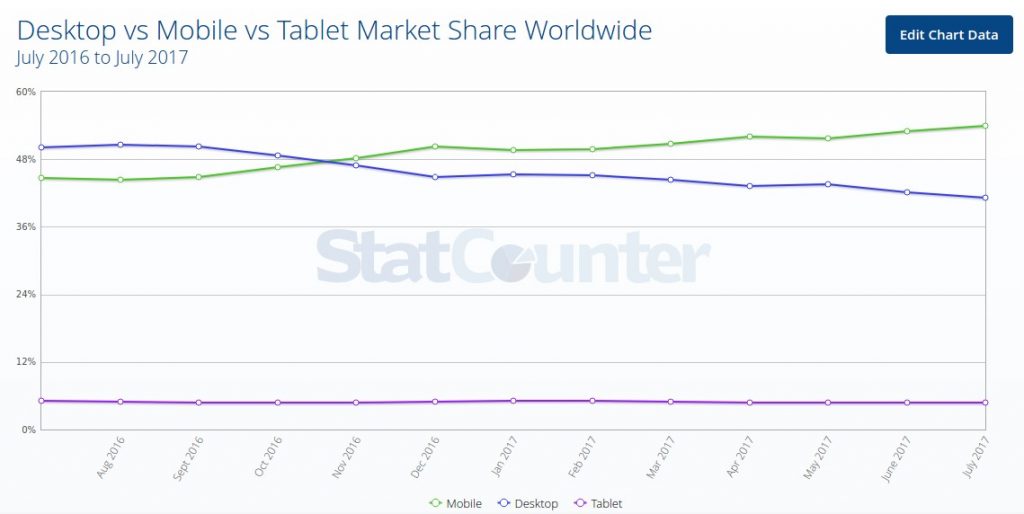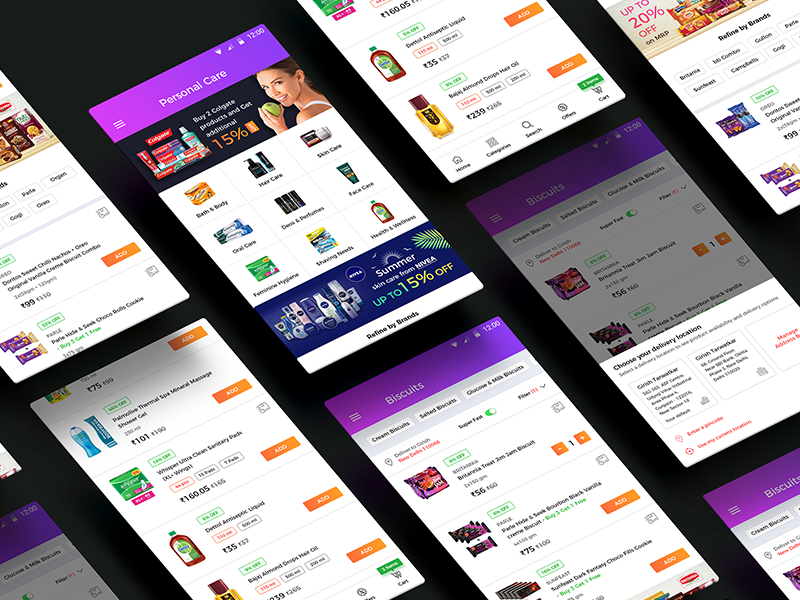Smartphones: One of the most important reasons behind this apparent dearth of time everyone seems to be suffering from.
The sheer amount of things you can do with the little rectangles is amazing, and as such, it is hardly a surprise that people are spending hours and hours of their time poring over their devices. From communication to entertainment, smartphones have revolutionized everything.
One of the areas that have faced nothing less than a paradigm shift, thanks to the introduction of smartphones, is commerce, or in layman terms — shopping. An area that used to be utterly dominated by first brick and mortar, and then e-commerce, is now evolving yet again. And this time, e-commerce is giving ground to a phenomenon known as m-commerce.
If you aren’t already aware of the differences between E-Commerce and M-Commerce, then the long and short is that M-commerce is the shopping that takes place over smartphones. So, everytime you use your smartphone to purchase something, you are basically indulging in M-commerce. How is that difference from e-commerce?
After all, both of the medium use the Internet, right? And the whole experience takes place over the Internet. Is the only difference between M-commerce and E-commerce, the size of the device you are using?
Well, the answer to this question as you might have guessed, is NO. M-commerce and E-commerce are both fundamentally different from each other. Both in terms of user experience, and exactly how things work. This difference is actually pretty interesting and we will spend some time studying it.
Size does matter, but it’s not everything!
Okay, so what is the most basic difference between a smartphone and a full fledged computer? Well, the thing that comes to the forefront of mind is of course the difference in sizes. Computers have shrunk, while smartphones have grown. However, there is still a pretty large chasm between their relative sizes.
However, while that does tend to change the whole shopping experience, there are deeper forces at play.
Fundamental differences between E-Commerce and M-Commerce:
| Point of Comparison | E-Commerce | M-Commerce |
| Inception | In the 1970s. | A couple decades later, in the 1990s. |
| Devices | Computers, laptops. | Smartphones, iPads, tablets, eBook readers, PDAs, etc. |
| Internet | Required. Doesn’t work without it. | There are systems that allow you to bypass and make do without the Internet. |
| Audience | Relatively smaller audience. | Number of mobile Internet users has surpassed computer Internet users. |
| Mobility | Limited. Imagine carrying a desktop everywhere you go! | Smaller devices, hence enhanced portability, translating into more usage. |
| Reach | Constant electricity and Internet are required. | Smartphones can stay charged for days now. |
| Payment gateway | Internet banking, credit/debit cards, wallets, etc. | All the methods used to pay for desktop purchases, and a few additional ones — such as Apple, Android Pay. |
| Usage | Relatively complicated user interface. | Simplified applications. Everything you need is made available directly. |
| Platform used | Web stores | Web stores, as well as applications (Mobile, Native, and Web.) |
Out of all the points outline above, perhaps the most important is the growth in usage. Around a couple of years ago, the number of people using smartphones to access the Internet crossed the number of people accessing it over their desktops. And the trend continues to this day.

As the graph above so clearly denotes, the number of people accessing the Internet through their smartphones is growing rapidly, indeed, it has already grown until it has passed the number of people accessing it through their desktops. This is an important nugget of information which, all on its own, speaks volumes about why, companies are spending so much of their resources and time in creating a brand presence on the mobile platform.
With the passage of time, this trend is expected to continue and more and more people are expected to climb upon the mobile bandwagon. There are reasons behind this, and especially with regards to shopping, there are powerful arguments favoring m-commerce over e-commerce.
Advantages of M-Commerce over E-Commerce:
1. Dedicated application.
On desktops, shopping is usually done through websites. These websites are usually impartial to the user opening them and present the same face to everyone. The user must enter their URL into his/her address bar in order to access them. With mobile applications on the other hand, brands have a dedicated presence on their user’s smartphone.
2. Unhindered Usage
You can’t exactly carry your desktop everywhere, and use it even while walking. A smartphone on the other hand, can be used while you are walking, sitting still, doing cartwheels, skydiving…….you get the idea. This means that people traveling on subways, people waiting for their friend, people who are simply bored and need something to do — now have the option to turning to their smartphones.
This has lead to a noticeable rise in the amount of impulsive shopping taking place.
3. Dedicated space
In many cases, companies also prefer having a customer bound to them through a smartphone application as compared to a website. Why? Well, the main reason is that having an application on a potential customer’s smartphone gives them a direct highway to the customer. They can use it to serve special offers, personalized discounts, use the data collected through the app to come with special deals and so on.
Indeed, this greater control and the deeper connection, is a reason why companies expend so much resources in trying to get their customers to install their applications on their platforms.
4. Simplified Applications
Mobile apps have been significantly simplified. Rather than going to all the trouble entailed by opening a website, logging in and then making your purchase, it is much easier to tap the app icon on your smartphone and fast track everything. True, people are still more comfortable conducting their transactions over a desktop, but that is very likely to change with the years.
Meanwhile, here are some quick, actionable tips you can adopt to get ready for the future.
1) Make your websites mobile friendly.
Now this is one point I really can’t stress enough. The last thing you want is some purchase-ready customer to open your website on his/her smart phone, only to give up in frustration because it is not mobile ready yet. After all, research has found that as many as 30 percent visitors instantly leave websites not optimized for mobiles.
2) Get an app!
The advantages of getting an app for your business are many, and varied. For instance, you will instantly be able to reach millions of new customers through the app Store.
3) Carve out an identity for your company.
You can also use your mobile app to build your company into a brand, rather than just another online store. This is important, and will yield huge returns over the long term. You can also use the app to drive deeper and more meaningful engagements with your users, and experiment with personalized offers.
These are just a few of the advantages associated with m-commerce. However, they have been enough to tip the scales. Today, the vast majority of people prefer to research the products they are looking to buy, through mobile – regardless of whether they end up buying the product online, or offline.
We are not saying that m-commerce is perfect. There are still friction points, and things still have quite a ways to go. However, the face of e-commerce is definitely changing, and mobile is going to have a big role to play in the final picture. Which is why, it is very important for online retailers to start considering their mobile strategy carefully.
Whether it is ensuring that your pages are responsive and look good on mobile, so as to avoid penalties from Google, or whether it is making sure that you have a dedicated presence on mobile in form of an App on the app store — the time to act and make your future ready, is here now.
What is your best tip on M-Commerce? Share it with us in the comments below or Tweet us!





